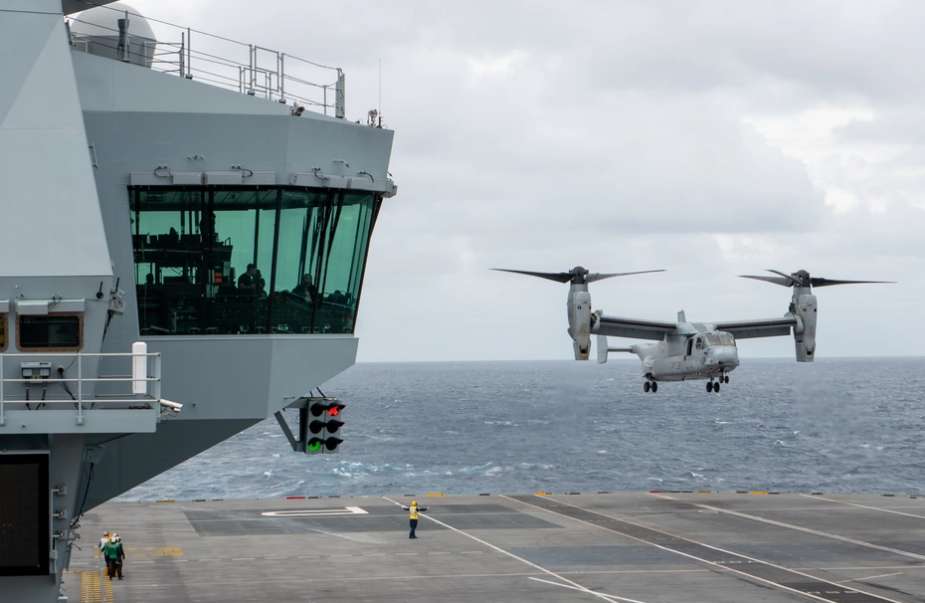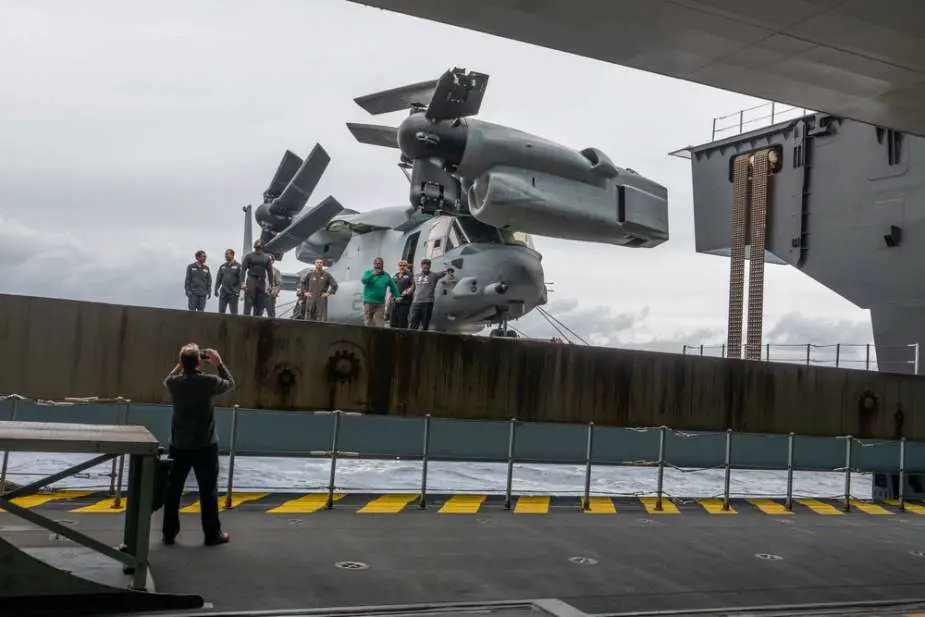Breaking news
HX-21 completes V-22 Osprey sea trials aboard HMS Prince of Wales.
In November 2023, the V-22 Test Team at Air Test and Evaluation Squadron (HX) TWO ONE conducted an extensive series of Dynamic Interface (DI) Ship-Air Test Trials aboard the United Kingdom's HMS Prince of Wales. This ship is the second of the Royal Navy's Queen Elizabeth-class aircraft carriers.
Follow Air Recognition on Google News at this link
 Ospreys have been operating from the flight decks of Royal Navy and Royal Fleet Auxiliary ships fairly regularly over the past decade, but still US crews need to get used to the RN’s ways of working (Picture source: Picture source: U.S. DoD/Lt. Ben Putbrese)
Ospreys have been operating from the flight decks of Royal Navy and Royal Fleet Auxiliary ships fairly regularly over the past decade, but still US crews need to get used to the RN’s ways of working (Picture source: Picture source: U.S. DoD/Lt. Ben Putbrese)
Over several weeks the Test Pilots and Flight Test Engineers of the V-22 team significantly expanded the operational envelope for the Osprey aboard this vessel to include a variety of landings, takeoffs, and deck operations, as well as ground handling and hangaring operations. These Test Trials mark a major milestone in the integration of maritime forces between the United States and the United Kingdom.
The MV-22 Osprey has a similar payload capacity to the Merlin Mk4 used by the Royal Marines – a couple of dozen troops fully kitted out – but can carry them higher, faster (up to 150mph) and further (upwards of 400 miles) into battle.
“The key difference is that the US Marine Corps views the MV-22 as a fixed-wing asset which can land and take off vertically – as opposed to a helicopter that can fly faster and further,” explained the pilot whom we cannot identify for security reasons. He has a wealth of front-line experience in Merlin Mk2s and trained Fleet Air Arm pilots of the future at RAF Shawbury and 705 NAS before coming to the exchange on the MV-22.
With the Osprey flying 90 percent of the time in ‘airplane mode’, it’s treated and flown as such (the fast jet community had a lot of influence on how it is operated, especially low-level tactics and formation flying). And some of the controls and maneuvers in the Osprey demand actions the reverse of those helicopter pilots are used to. So unless a former F-35 pilot fancies a change, “learning to operate an MV-22 is a complete restart for any future Royal Navy exchange pilot,” he warns.
Ospreys have been operating from the flight decks of Royal Navy and Royal Fleet Auxiliary ships fairly regularly over the past decade, but still US crews need to get used to the RN’s ways of working: different deck layouts, procedures, radio calls, lighting and so on.
 Over several weeks the Test Pilots and Flight Test Engineers of the V-22 team significantly expanded the operational envelope for the Osprey aboard this vessel to include a variety of landings, takeoffs, and deck operations, as well as ground handling and hangaring operations (Picture source: Picture source: U.S. DoD/Lt. Ben Putbrese)
Over several weeks the Test Pilots and Flight Test Engineers of the V-22 team significantly expanded the operational envelope for the Osprey aboard this vessel to include a variety of landings, takeoffs, and deck operations, as well as ground handling and hangaring operations (Picture source: Picture source: U.S. DoD/Lt. Ben Putbrese)


























